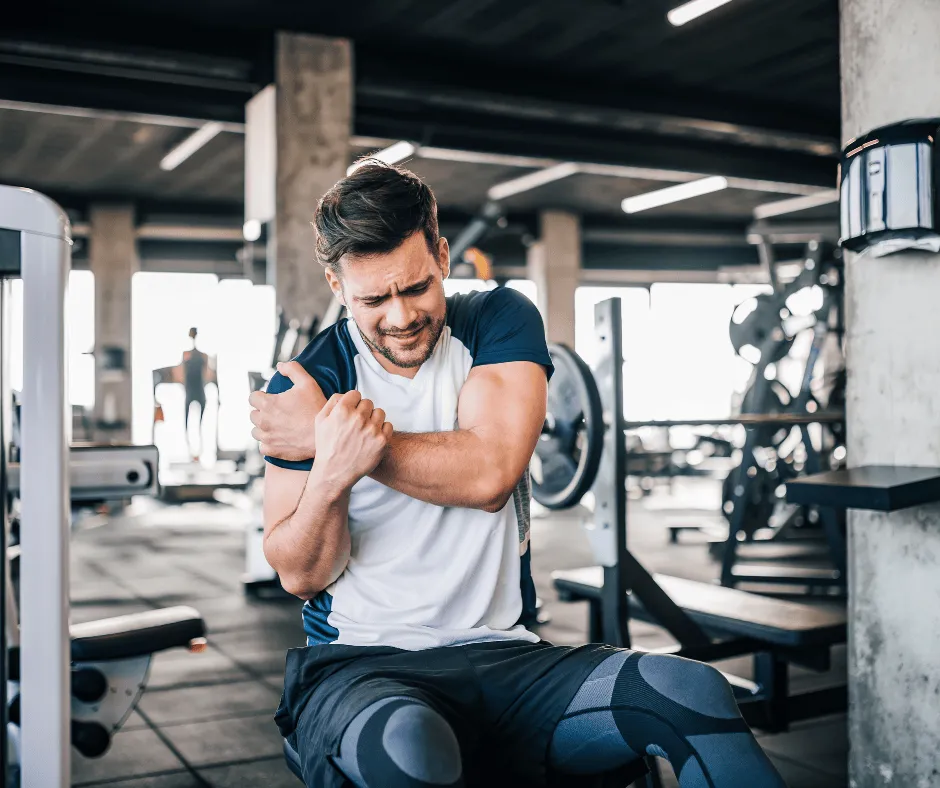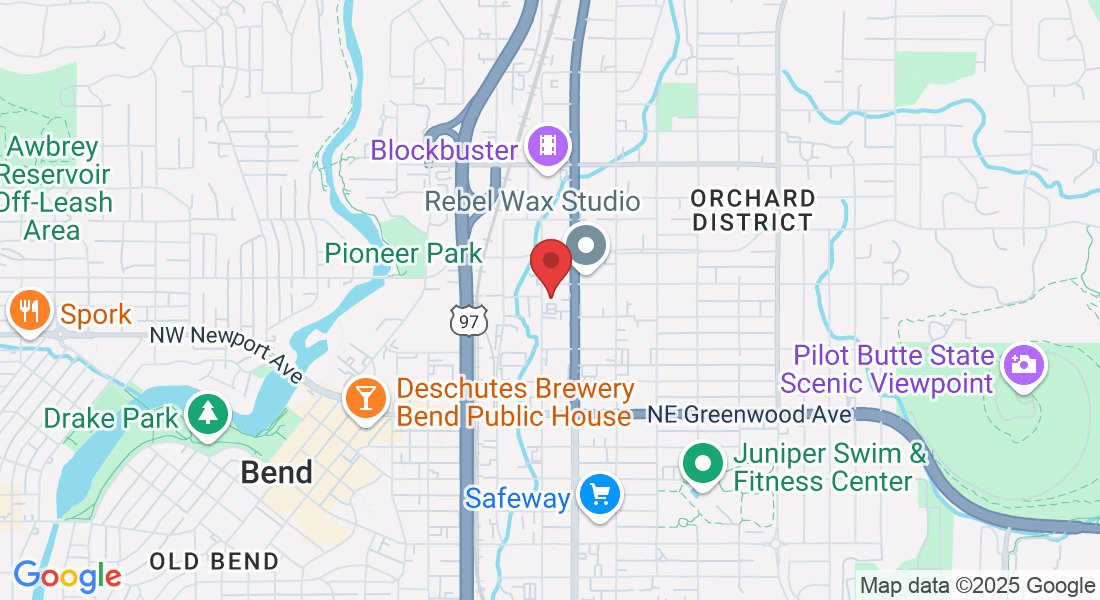PhysioFITNESS
Fitness Injuries: Recover & Recondition With Physical Therapy
Unlock Your Athletic Potential with Effective Rehabilitation for Fitness & Sports Injuries: At PhysioFIT, we understand the frustration and setbacks that sports injuries can cause, impacting athletes' seasons, games, and even their careers. Whether you're an athlete, a fitness enthusiast, doing Crossfit, or just someone who enjoys staying active, our dedicated team of physical therapists is here to provide expert care and help you recover from injuries, regain strength, manage pain, and prevent future problems. Don't let injuries hold you back—schedule an appointment today and take the first step toward getting back in the game.
What You Should Know
According to the National Institutes of Health, the prevalent types of fitness injuries most often include:
Knee Injuries & Sprains
Shin Splints & Strains
Swollen Muscles, Fractures, & Dislocations
A proper diagnosis of a fitness or sports injury involves a thorough evaluation from a professional.

What are the Most Common Ways Athletes Get Hurt?
Depending on the nature of the sports activities in which athletes participate, they may face the possibility of encountering different types of injuries. The human body is subjected to unique stresses and demands during various sports, making certain injuries more prevalent in specific athletic pursuits.
By understanding the specific injury profiles related to their sports, athletes can implement targeted training strategies, adopt proper techniques, and seek professional guidance to reduce the risk of injury and optimize their performance on the field or court.
Ankle Injuries: Athletes who engage in activities involving frequent running are susceptible to ankle injuries. Rolling or twisting the ankle can lead to strains or tears in the connective tissues.
Pulled Muscles: Overusing tired muscles, especially after prolonged workouts or performances, can cause them to stretch or tear. This commonly occurs in various areas of the legs due to the constant running, jumping, and quick changes of direction required in most sports.
Shin Splints: Extended periods of running can result in inflammation of the muscles and connective tissues surrounding the shin.
Knee Injuries: A sudden twisting or improper bending of the knee can cause ligament sprains.
Tennis Elbow: Officially known as tendinitis, tennis elbow occurs when the muscles and connective tissues around the elbow become inflamed from repetitive use.
Hip Flexor Strain: The hip flexor muscles, located on the upper-front side of the thigh, play a significant role in lifting the knee towards the trunk and assisting in leg movements. Weakness or stiffness in these muscles can be caused by prolonged sitting or poor posture. Sports-related injuries to the hip flexors can occur during activities such as sprinting, running on inclines, and sudden starts and turns.
In addition to joint, muscle, and bone injuries, concussions have become a prominent concern in sports. A concussion is a traumatic head injury that may result in severe headaches, altered levels of alertness, or even loss of consciousness. It can occur when the head is struck by a moving object or hits a solid surface.
Concussions are among the most challenging injuries to manage in sports today, and physical therapy plays a crucial role in the multidisciplinary approach to their diagnosis and treatment.
If any of this information resonates with your current situation, we urge you to schedule an appointment with us immediately. Don't let hip pain diminish your life quality - allow us to help you embark on the path to relief today.
Please Note: The information provided on our website is intended for general education and is not a substitute for professional medical advice. Each individual's situation and body is different. Therefore, what may work for one person may not work for another. We care about your well-being and advise you to reach out to us to discuss your specific needs before implementing any advice from our website.
Client Testimonials
Performance Programming
What is Performance Programming?
At PhysioFIT, our Performance Programming is designed to take your abilities to new heights. Whether you are a seasoned athlete or just occasionally active We offer a comprehensive personal training program that focuses on enhancing your overall physical performance. From beginners to professionals, our customized approach ensures that your training aligns with your specific goals.
Our performance programming, aka performance coaching, encompasses a wide range of exercises that target various aspects of your level of athleticism, including mind-body connection, mobility, stability, strength, endurance, power, speed, agility, and overall performance. Through a very personalized combination of exercises, we aim to improve your strength, endurance, technique, and overall physical performance. Our expert team of personal trainers and physical therapists in Bend will work closely with you to develop a personalized program that caters to your unique body, abilities, and lifestyle.
With our Performance Programming, you can expect to see improvements in your physical performance, reduce the risk of injuries, and enhance your strength and overall mobility. It's not just for elite athletes but also beneficial for individuals of all ages and abilities who want to improve their health, maintain an active lifestyle, and unlock their body's full potential.

The Benefits of Performance Programming
Enhanced Physical Performance: Our Performance Programming is designed to optimize your fitness abilities and take your performance to the next level. Through targeted exercises and specialized training techniques, you can improve your strength, endurance, speed, agility, and overall physical performance.
Injury Prevention: Our program includes exercises that focus on building strength, stability, and proper movement mechanics, which can help reduce the risk of fitness-related injuries. By improving your body's resilience and addressing any muscle imbalances or weaknesses, you can enhance your ability to withstand the physical demands of your lifestyle.
Technique Improvement: Our expert trainers and physical therapists work closely with you to fine-tune your technique and movement patterns. By providing personalized feedback and guidance, we help you optimize your form, maximize efficiency, and improve your overall technique, leading to better performance and reduced risk of injuries.
Tailored to Your Needs: Performance Programming at PhysioFIT is customized to your specific body, abilities, and goals. We take into account your specific lifestyle demands, current fitness level, and any limitations or considerations you may have. This personalized approach ensures that you receive the most effective training plan that is tailored to your unique needs.
Your Source for All Things Physical Therapy in Bend Oregon
The PhysioBlog

Avoid the "Always In Season" Training Mistake | PhysioFIT Bend Oregon
Whether you’re chasing PRs, hiking Pilot Butte every weekend, or grinding it out at the gym between work and family, here’s a hard truth most active adults in Bend, Oregon don’t want to hear:
You might be training like you’re always in season… and that’s a problem.
At PhysioFIT at The Performance Collective, we work with athletes of all kinds—from mountain bikers and CrossFitters to weekend warriors and backcountry skiers. And one of the most common mistakes we see? People treating their bodies like they're always on. Always pushing. Never pausing. Never rebuilding.
The Athlete's Secret: Training in Phases
Professional athletes don’t train the same way year-round. Their entire performance strategy is built around periodization—structured phases of stress, recovery, adaptation, and peak performance. That cycle revolves around two core phases:
1. In-Season Phase: Maintain + Compete
This is where most of us think we should live. The “go-time” mode. The sexy part. The performance stage.
But in-season training is not about growth—it’s about preservation. It’s about doing just enough to maintain your edge, avoid injury, and stay sharp during competition or peak activity windows.
Here’s what smart in-season training looks like:
Prioritizing recovery over volume
Avoiding spikes in load or intensity
Monitoring for fatigue and overuse warning signs
Maintaining mobility and joint health through prehab routines
Staying consistent but conservative with strength training
Think of it as treading water at a high level—not sinking, not surging.
2. Off-Season Phase: Rebuild + Reset
Now here’s where the magic happens—and it’s where most active adults fall short.
The off-season is not about getting soft. It’s about getting smart.
You’re not backing off because you’re weak. You’re backing off to build back stronger. This is your chance to:
✅ Heal micro-tears in muscle and connective tissue
✅ Address mobility restrictions and movement inefficiencies
✅ Rebalance strength across joints and muscle groups
✅ Develop better mechanics and foundational endurance
✅ Focus on the little things that make a big difference when you’re back in go-mode
Skipping this phase is like skipping leg day for your whole body. Eventually, the imbalance will catch up with you—usually in the form of nagging pain, poor performance, or injury.
Why Always Being “In-Season” Wears You Down
Here’s what we see at PhysioFIT all the time:
🚫 Low-grade fatigue that just won’t go away
🚫 Flat workouts even with plenty of sleep and nutrition
🚫 Nagging tendon pain in the knees, shoulders, or elbows
🚫 Back tightness or joint pain that creeps up after every session
🚫 A growing pile of PT sessions, chiro visits, and massage appointments that treat symptoms but not the root cause
The root cause? You never gave your body time to adapt.
Active Adults Need Off-Seasons More Than Pros
Here’s the kicker: If you’re not a professional athlete, you might need an off-season even more.
Why? Because you’re juggling stressors athletes don’t have to deal with:
Long work hours
Parenting
Poor sleep
Travel
Deadlines
Mental fatigue
All of these increase your overall load—even before you step into the gym. That’s why many of our Bend clients at PhysioFIT perform better once they adopt a smarter, season-based approach to their training.
How to Build Your Own Training Seasons (Without a Coach)
Even if you’re not prepping for the Olympics, you can use the same principles:
✅ Step 1: Pick Your “Competition Season”
Choose 1–2 times per year where you’ll push hard—races, ski trips, backpacking adventures, etc.
✅ Step 2: Plan a Structured Off-Season
2–3 months of reduced load, increased mobility work, and strength training to fix weak links.
✅ Step 3: Layer in a Pre-Season Phase
4–8 weeks before go-time, ramp up intensity and sport-specific training.
✅ Step 4: Check in with a Physio
Get assessed. Address compensations. Test your strength and mobility objectively. (We use force plates, dynamometers, and advanced movement screens at PhysioFIT.)
Conclusion
You can’t just keep hammering and expect to level up.
Recovery is the gateway to performance.
By learning to respect both the in-season and off-season phases, you’ll unlock:
✅ More gains
✅ Fewer injuries
✅ Better energy
✅ Longer athletic longevity
✅ More fun doing what you love
And that’s what we’re all about at PhysioFIT.
Ready to Reset?
If you’re stuck in permanent “go” mode and your body’s giving you warning signs, it’s time for a smarter approach. At PhysioFIT at The Performance Collective in Bend, Oregon, we help active adults and recreational athletes build personalized performance plans that respect the cycle—and get results.
Schedule a recovery & performance assessment with one of our sports therapy specialists today.
Sources:
Copyright PhysioFIT 2025 . All rights reserved


